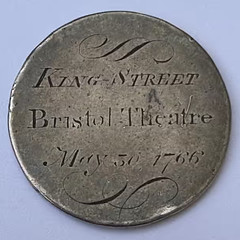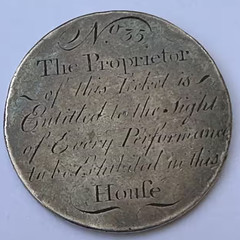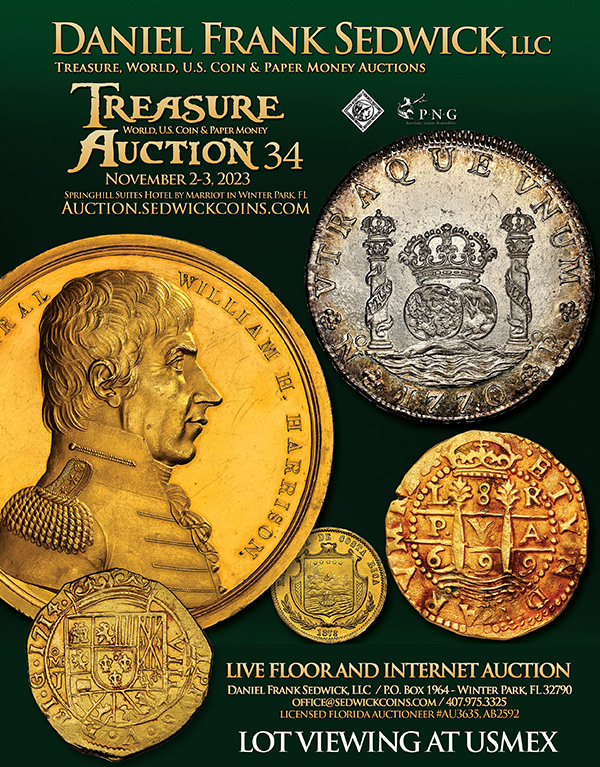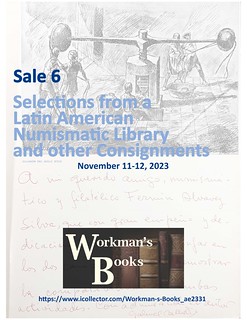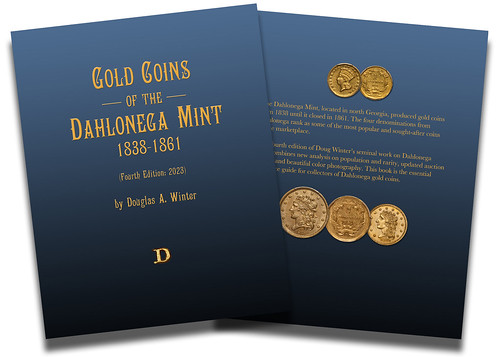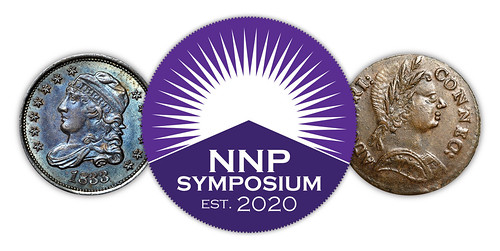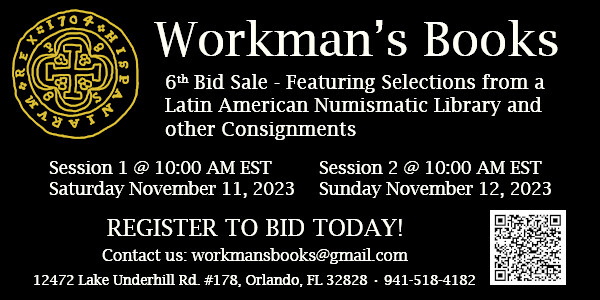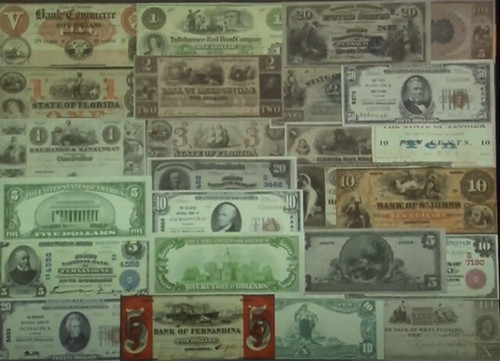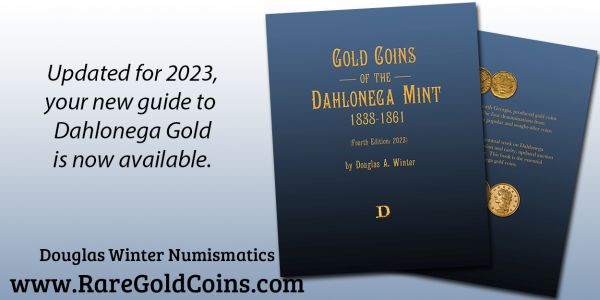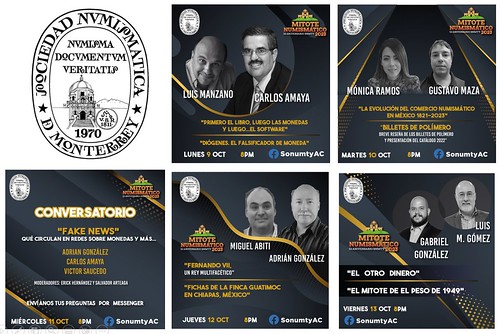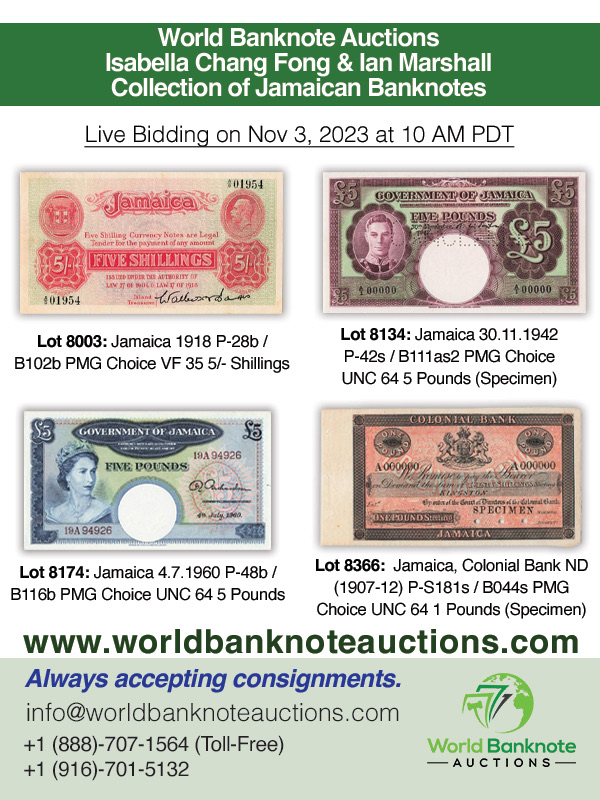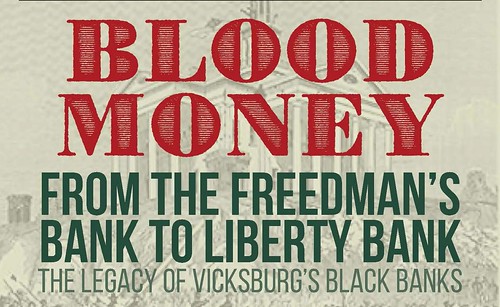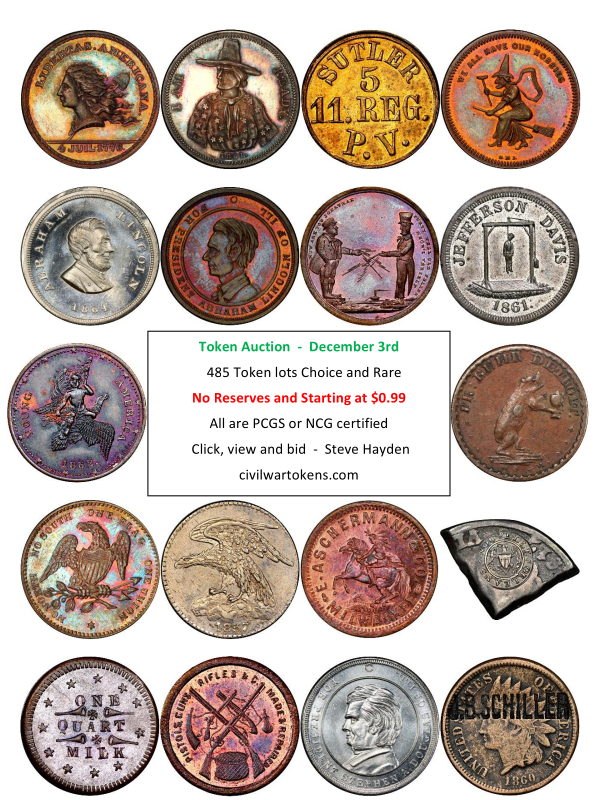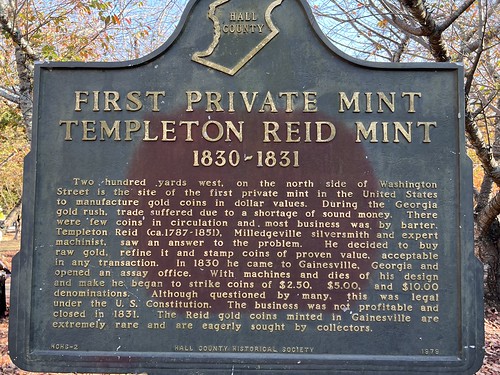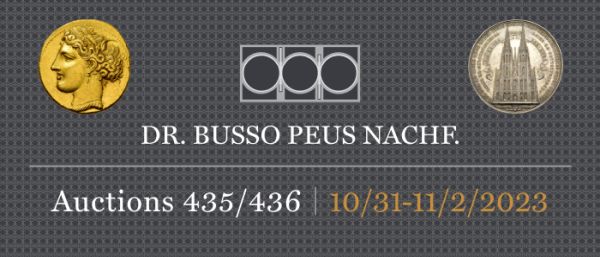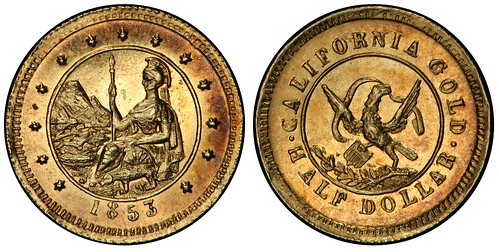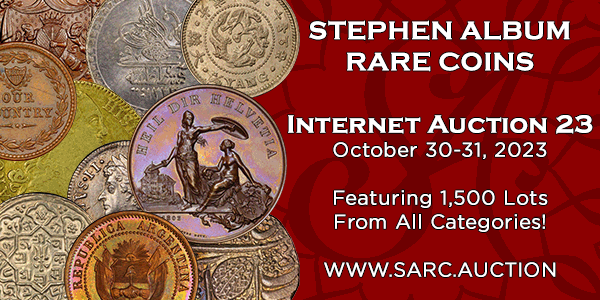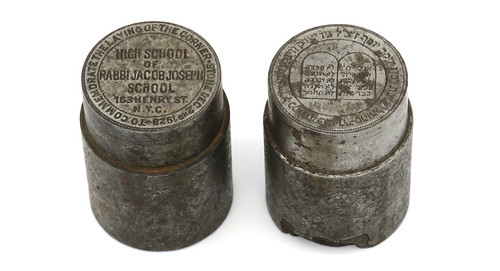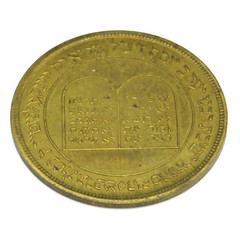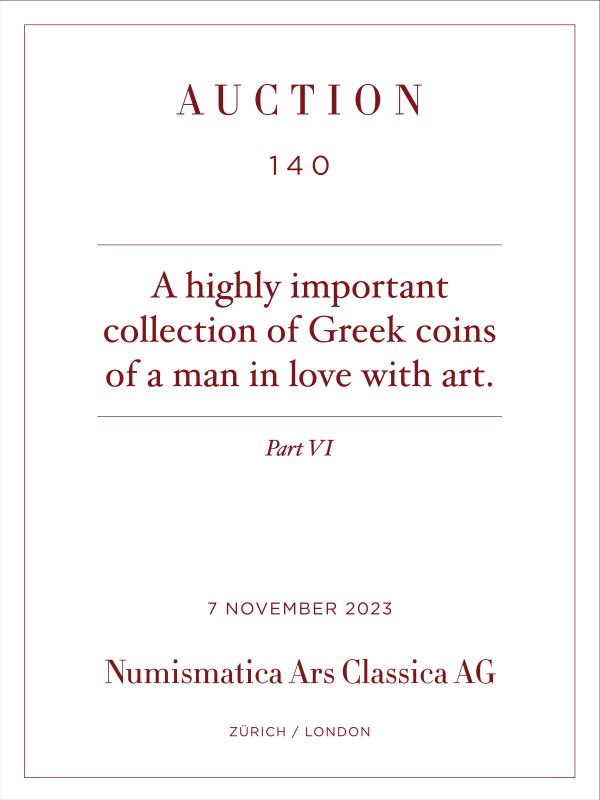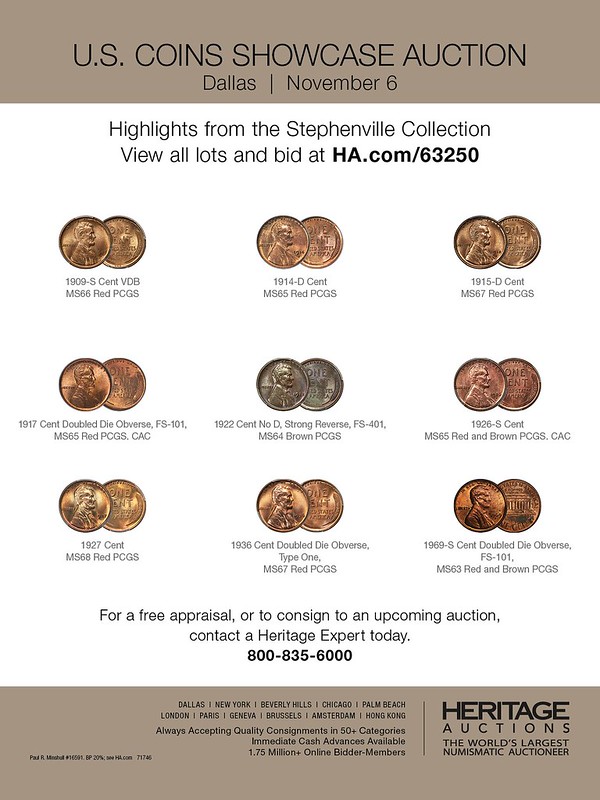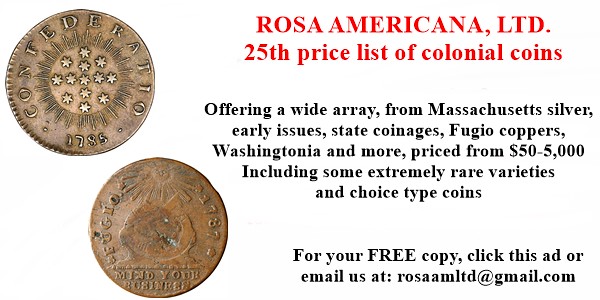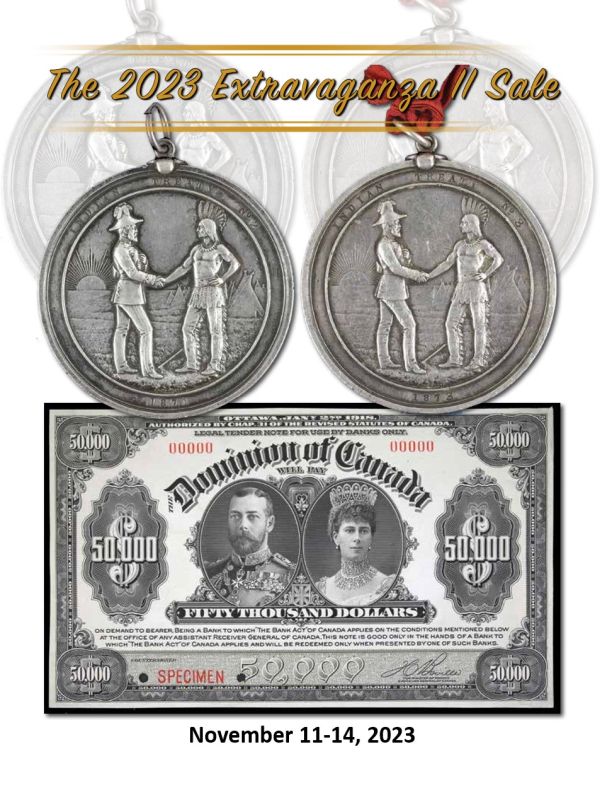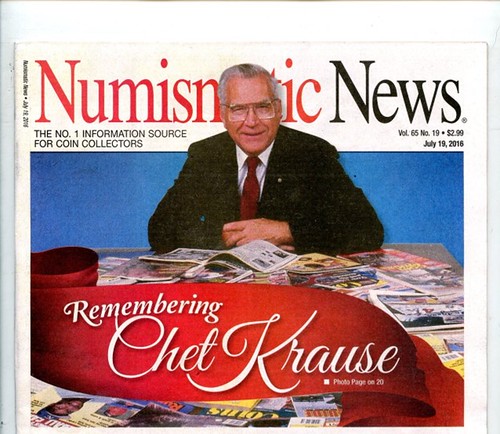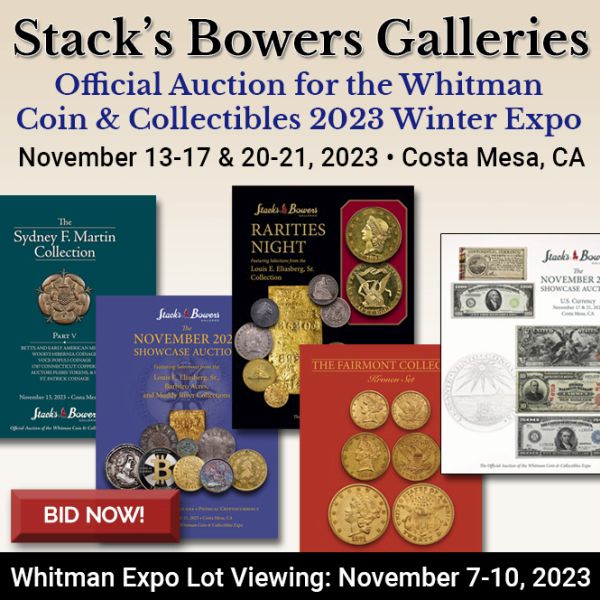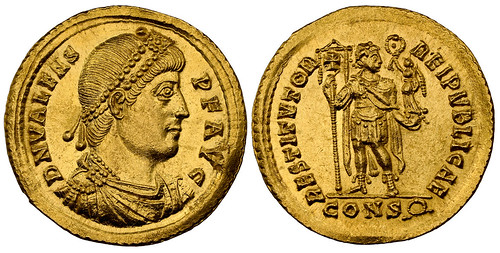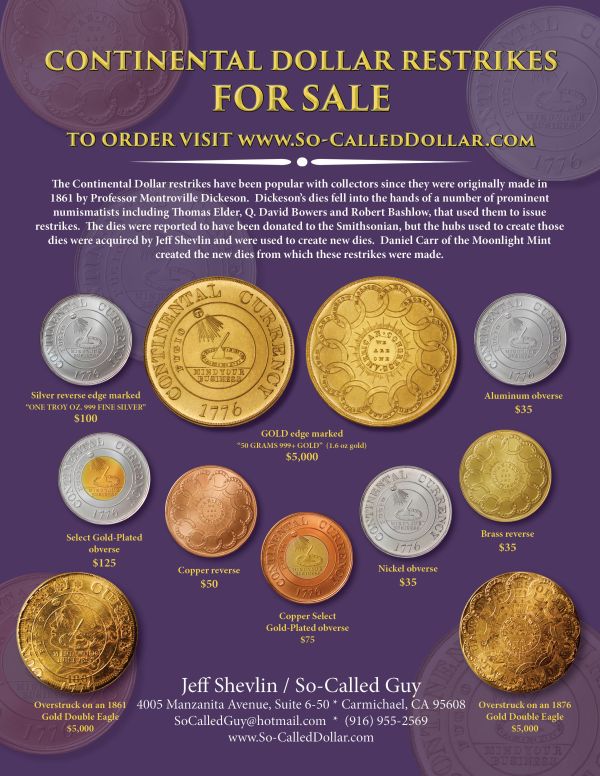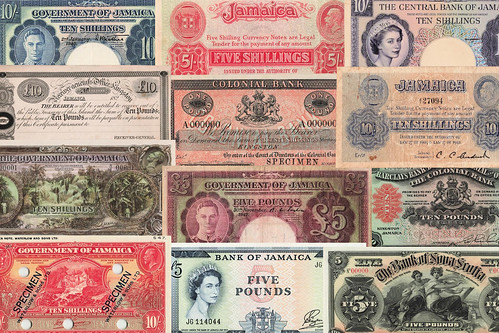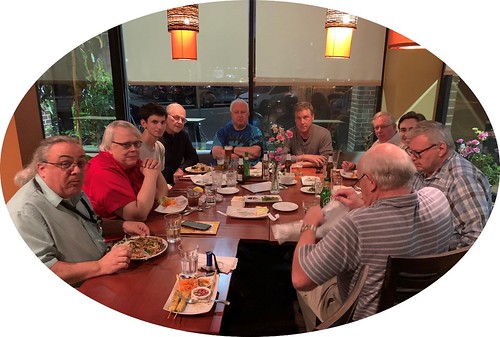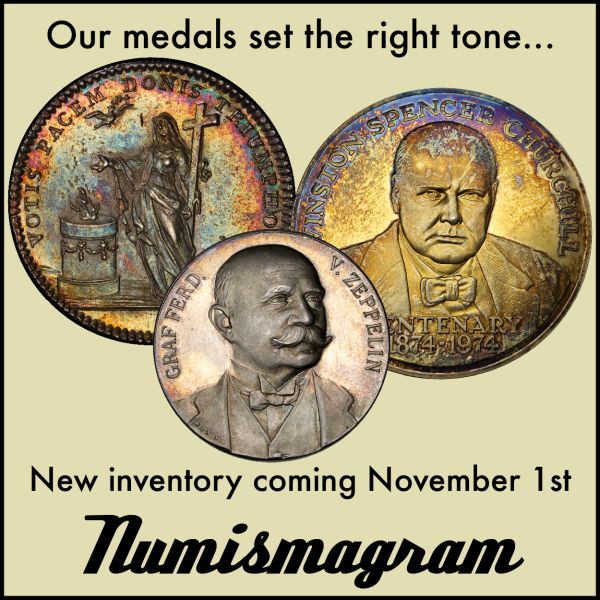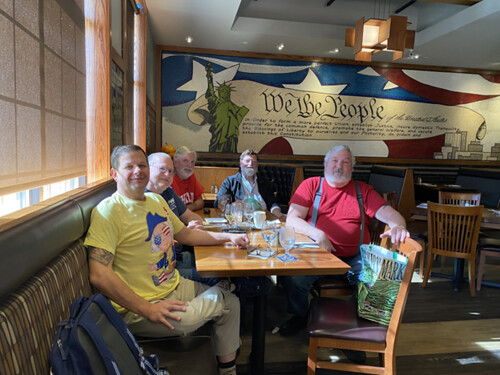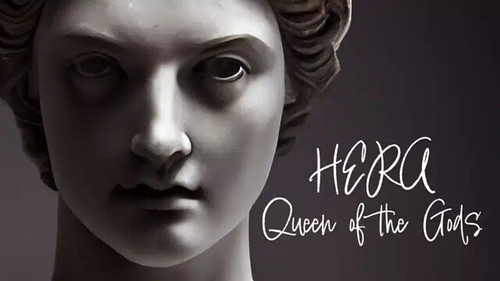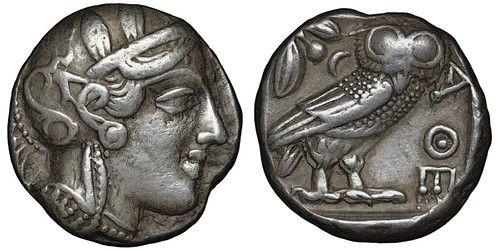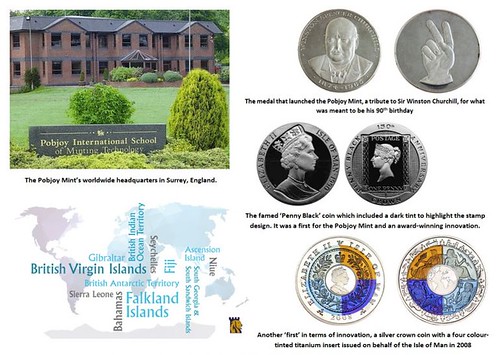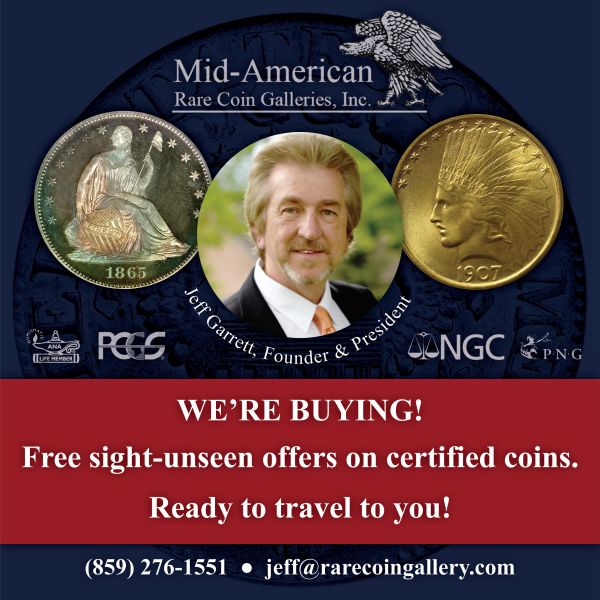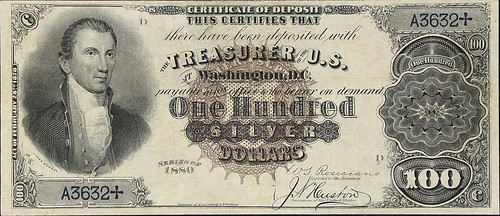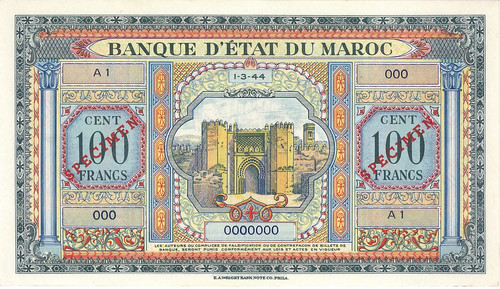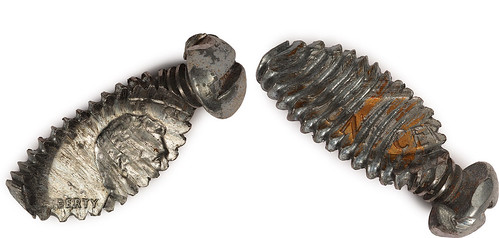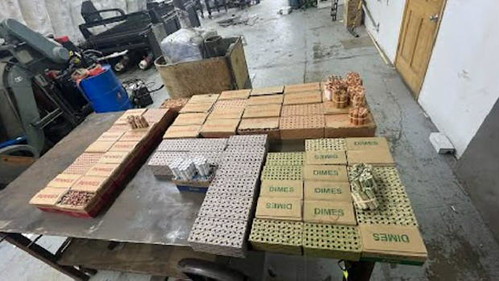
Visit our NBS Sponsors




About UsThe Numismatic Bibliomania Society is a non-profit association devoted to the study and enjoyment of numismatic literature. For more information please see our web site at coinbooks.org SubscriptionsThose wishing to become new E-Sylum subscribers (or wishing to Unsubscribe) can go to the following web page link MembershipThere is a membership application available on the web site Membership Application To join, print the application and return it with your check to the address printed on the application. Print/Digital membership is $40 to addresses in the U.S., and $60 elsewhere. A digital-only membership is available for $25. For those without web access, write to: Jeff Dickerson, Treasurer AsylumFor Asylum mailing address changes and other membership questions, contact Jeff at this email address: treasurer@coinbooks.org SubmissionsTo submit items for publication in The E-Sylum, write to the Editor at this address: whomren@gmail.com BUY THE BOOK BEFORE THE COINSale Calendar |
- WAYNE'S WORDS: THE E-SYLUM OCTOBER 29, 2023
- MORE WORKMAN BOOKS SALE 6 SELECTIONS
- NEW BOOK: DAHLONEGA MINT GOLD, 4TH EDITION
- NNP SYMPOSIUM NOVEMBER 2-4, 2023
- VIDEO: FLORIDA CURRENCY 1817-1935
- MONTERREY NUMISMATIC SOCIETY CONFERENCES
- LECTURE: VICKSBURG'S BLACK BANKS
- ANA GREG LYON MEMORIAL YN SCHOLARSHIP
- NOTES FROM E-SYLUM READERS: OCTOBER 29, 2023
- "ARMS OF CALIFORNIA" GOLD HALF FIRST APPEARANCE?
- SOME OBSERVATIONS ON TOKEN DIES
- VOCABULARY TERM: ORANGE PEEL
- ARD BROWNING DISCOVERY
- RON GILLIO INTERVIEW, PART FOUR
- KRAUSE LEGACY PARK DEDICATION (PEARL)
- KRAUSE LEGACY PARK DEDICATION (REICHENBERGER)
- ATLAS NUMISMATICS SELECTIONS: OCTOBER 29, 2023
- WBNA JAMAICAN BANKNOTE HIGHLIGHTS
- KUENKER AUCTIONS 395-397, PART 3
- TOM'S NUMISMATIC DIARY: OCTOBER 29, 2023
- THURSDAY LUNCH CLUB REPORT OCTOBER, 2023
- HERA ON ANCIENT COINS
- ANCIENT GREEK COINAGE GOLD PURIFICATION STUDY
- BRISTOL OLD VIC THEATRE TOKEN
- PHYSICAL BITCOINS IN SBG NOVEMBER 2023 SALE
- ON THE CLOSURE OF THE POBJOY MINT
- 1880 $100 SILVER CERTIFICATE
- MOROCCO 100 FRANC PROOFS
- GHOST LEAVES COINS AROUND HOUSE
- LOOSE CHANGE: OCTOBER 29, 2023
- COLORADO COIN CAPER
Content presented in The E-Sylum is not necessarily researched or independently fact-checked, and views expressed do not necessarily represent those of the Numismatic Bibliomania Society.
WAYNE'S WORDS: THE E-SYLUM OCTOBER 29, 2023
 New subscribers this week include:
Gilbert Chang of Alpha Numis, courtesy Jim Contursi;
Mike Loy, courtesy of Bruce Perdue;
and returning subscriber BK Lim.
Welcome aboard (and back)!
New subscribers this week include:
Gilbert Chang of Alpha Numis, courtesy Jim Contursi;
Mike Loy, courtesy of Bruce Perdue;
and returning subscriber BK Lim.
Welcome aboard (and back)!
Thank you for reading The E-Sylum. If you enjoy it, please send me the email addresses of friends you think may enjoy it as well and I'll send them a subscription. Contact me at whomren@gmail.com anytime regarding your subscription, or questions, comments or suggestions about our content.
This week we open with numismatic literature sale selections, one new book, updates from the Newman Numismatic Portal, reader questions and comments, and more.
Other topics this week include the Dahlonega Mint, Florida currency, token dies, Greg Lyon, Ard Browning, Chet Krause, fixed price and auction previews, Jamaican banknotes, Hera, physical bitcoins, the Pobjoy Mint, and the ghost who gives you coins.
To learn more about Cuban coinage, cobs, Beale's Treasure, the Dahlonega Mint, polymer banknotes, Vicksburg's Black Banks, the Templeton Reid Mint, the Arms of California gold half dollar, the Davison die hoard, the orange peel effect, Sol Kaplan, Eugene Daub, the Ella Heintz medal, and the 1880 $100 Silver Certificate, read on.
Oh, and who can spot the chronogram in this issue? Have a great week, everyone!
Wayne Homren
Editor, The E-Sylum
MORE WORKMAN BOOKS SALE 6 SELECTIONS
Alan Workman has a numismatic literature sale closing November 11-12, 2023. Here's some more selected lots. -Editor
Workman's Books is conducting its Sixth sale, "Sale 6 - Selections from A Latin American Numismatic Library and other Consignments.". Accompanying the Latin American Numismatic Library is a sizeable consignment of books, catalogs, magazines, journals, and dealer fixed price lists on numismatics, orders & decorations, militaria, shipwrecks, sunken treasure, lost treasure, treasure hunting, lost mines, and treasure in the American West.
- Books: 1 to 467
- Auction Catalogs & Dealer Fixed Pricelists: 468 to 734
SESSION 2:
- Auction Catalogs & Dealer Fixed Pricelists: 735 to 1267
- Journals & Magazines: 1268 to 1345
- Posters: 1346
- Newspapers: Lot 1347
- Photos: 1348 to 1349
- Postcards: 1350 to 1351
- VHS Tapes: 1352 to 1354
- DVDs: 1355
NEW BOOK: DAHLONEGA MINT GOLD, 4TH EDITION
Doug Winter has published a new edition of his book on Dahlonega gold coins. -Editor
ANNOUNCING THE ARRIVAL OF THE BRAND-NEW 2023 EDITION OF GOLD COINS OF THE DAHLONEGA MINT, 1838-1861
DWN Publishing, a division of Douglas Winter Numismatics (DWN), is proud to announce the availability of the
2023 edition of its popular reference Gold Coins of the Dahlonega Mint, 1838-1861.
This is the fourth edition of
this work, but it is the first revision since 2013.
There have been many changes in the market for Dahlonega coins in the past decade, and both newbies and seasoned veterans will find this hardbound 278 page book to be an invaluable reference.
NNP SYMPOSIUM NOVEMBER 2-4, 2023
Newman Numismatic Portal Project Coordinator Len Augsburger provided the following report. -Editor
Newman Portal Symposium Takes Place November 2-4
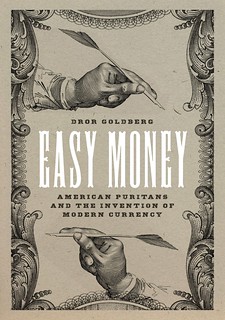 The Newman Portal Symposium returns this week with a series of online presentations scheduled for November 2-4. This is our seventh event, having initially launched in fall 2020 in response to the pandemic. Our feature presentation, at 11AM Eastern on Friday, November 3, will include the premier of a video on United States coins in the American Numismatic Association Museum in Colorado Springs, CO, followed by Q&A with ANA Curator Doug Mudd.
The Newman Portal Symposium returns this week with a series of online presentations scheduled for November 2-4. This is our seventh event, having initially launched in fall 2020 in response to the pandemic. Our feature presentation, at 11AM Eastern on Friday, November 3, will include the premier of a video on United States coins in the American Numismatic Association Museum in Colorado Springs, CO, followed by Q&A with ANA Curator Doug Mudd.
In other sessions, Professor Dror Goldberg of the Open University of Israel will talk about his new book, Easy Money: American Puritans and the Invention of Modern Currency (University of Chicago Press, 2023), while Mark Borckardt will be speaking on the history of the Early American Coppers club. Our own Lianna Spurrier, NNP Symposium Producer, will discuss Japanese bar money, covering the Edo Period to the Meiji Restoration. A full schedule is available on the Symposium website.
VIDEO: FLORIDA CURRENCY 1817-1935
The David Lisot Video Library on the Newman Numismatic Portal can be found at:
https://nnp.wustl.edu/library/multimediadetail/522852
We highlight one of his videos each week in The E-Sylum. Here's one from 2017 about Florida currency. -Editor
MONTERREY NUMISMATIC SOCIETY CONFERENCES
Adrián González-Salinas of Monterrey, Mexico passed along this information about public numismatic presentations from the Monterrey Numismatic Society. Thank you. -Editor
Monterrey's Numismatic Society was founded on 15 October 1970 so last week (09-13 October) celebrated its 2nd Mitote Numismático (Numismatic Party) with 9 numismatic conferences.
These are the conferences broadcasted by Zoom and Facebook Live
https://www.facebook.com/SonumtyAC/videos
LECTURE: VICKSBURG'S BLACK BANKS
An upcoming program at Vicksburg National Military Park in Vicksburg, MS features author Shennette Garrett-Scott speaking on Vicksburg's Black Banks. -Editor
On November 4, Vicksburg National Military Park will host a special program Blood Money: From the Freedman's Bank to Liberty Bank, the Legacy of Vicksburg's Black Banks
presented by Professor Shennette Garrett-Scott
The opening of the Vicksburg Freedman's Bank in 1865 and its failure less than a decade played a critical role in the struggle for freedom and economic justice in Vicksburg, a legacy that stretches from the Civil War to the present day. Come learn more about the role of USCT soldiers and officers in this important chapter of Vicksburg history and ways to use Freedman's Bank and Black banking records for family and local community research.
ANA GREG LYON MEMORIAL YN SCHOLARSHIP
The ANA has created a new scholarship in honor of Greg Lyon. -Editor
Each year, the American Numismatic Association (ANA) hosts Summer Seminar, a life-changing event for those interested in coin collecting. The two-week event is responsible for catapulting the careers of several of the nation's most respected money collectors, authors and dealers. Students are able to learn from instructors who are recognized leaders in their fields, and mingle with fellow numismatists. The ANA also offers annual scholarships to adults and Young Numismatists (YN) to provide the chance to attend. Full scholarships include room and board for one week, tuition, and airfare, while partial scholarships cover tuition only.
NOTES FROM E-SYLUM READERS: OCTOBER 29, 2023
Templeton Reid Mint Marker
Dave Steine writes:
"Ran across this marker by accident. I had no idea."
A cool place to stumble into in northern Georgia. Here's an earlier article about the site. -Editor
To read the earlier E-Sylum article, see:
THE TEMPLETON REID MINT
(https://www.coinbooks.org/v24/esylum_v24n03a30.html)
Other topics this week include cash from the Titanic, the Waterloo Soldier's coins, and coin model Hettie Anderson. -Editor
"ARMS OF CALIFORNIA" GOLD HALF FIRST APPEARANCE?
Bob Leonard has a research question for our readers. Can anyone help? The image is from PCGS CoinFacts. -Editor
I'm working on a third edition of Breen-Gillio, California Pioneer Fractional Gold. In the second edition, the earliest appearance of BG-435, the rare and popular Arms of California round half dollar dated 1853, is given as the Jules Fonrobert collection, lot 1382 in the auction of February 18, 1878. Fonrobert died in 1877; he purchased most of his U.S. coins after 1871.
It seems to me that there should be an earlier appearance in the United States. Fonrobert owned some rare U.S. pattern coins, and I know that efforts have been made to identify the auctions where he obtained them, and the agent or bidder name that he used. Was there an 1853 round California half dollar in any of the auctions Fonrobert is known to have bid in? Can anyone help?
THE BOOK BAZARRE
Ken Rendell is the greatest collector in the world.Andrew Roberts:
Ken Rendell doesn't just think outside the box, he's lived outside, as this gripping memoir shows.Doris Kearns Goodwin:
What a journey it is!Order your copy online (including at Whitman.com ), or call 1-800-546-2995.
SOME OBSERVATIONS ON TOKEN DIES
Early last month I came across this listing on an auction site and reached out to reader Heath White for his thoughts. Heath has acquired large troves of old token, medal and ornamental dies, and sold many through an eBay dealer. Here's our exchange. [NOTE - the die images on the auction site must have been reversed for readability.] -Editor
[B]rass token is 33mm. Each die is made of solid steel and each weighs 12 ounces. One die is marked on the side "L STEEL" as seen in one of the last photos. From 1928. Entirely HAND ENGRAVED in mirror image! Imagine how talented the engraver had to be to make the side with the Hebrew (there is Yiddish too), in mirror image! He did such a beautiful job, he not only must of been Jewish, but likely was raised with an Orthodox religious upbringing.
In general, American token and medal dies dating from before 1950 were destroyed or thrown away after minting stopped. I have never seen dies for an American Jewish token or medal anywhere. None have ever appeared at auction and none are in any museums, including the Jewish Museum of New York, Metropolitan Museum of Art storage holdings, etc. The fact that these dies were not destroyed means they meant something to someone, maybe the engraver himself kept them? They would be an impressive "resume" for future engraving jobs when the die with the Hebrew + Yiddish were shown. This is truly a once in a lifetime chance to own such a grouping. Brass token is included in this sale with the dies.
VOCABULARY TERM: ORANGE PEEL
Here's another entry from Dick Johnson's Encyclopedia of Coin and Medal Terminology. -Editor
Orange Peel. A surface effect on coins that resembles a shingled roof, or pebbled or rippled look, or the skin of an orange (although at a smaller scale). This occurs in an area that should be smooth in appearance. In extreme cases, it can be seen on frosted or wire brush field areas but mostly appears on cameo type proof coin finishes. It has been observed on nineteenth century proof coins as well as ones of later issue and modern proofs.
Orange peel describes the macro-scale breakup in the field of a coin that is generally due to excessive grain size. It also refers to grain boundary slippage in the field that is visible with 3X power near the rim (border). Appearance is irregular where it should be smooth and mirror like.
ARD BROWNING DISCOVERY
E-Sylum Feature Writer and American Numismatic Biographies author Pete Smith submitted this article with an interesting discovery about Ard Browning, author of the classic reference, Early Quarter Dollars of the United States. Thank you! -Editor
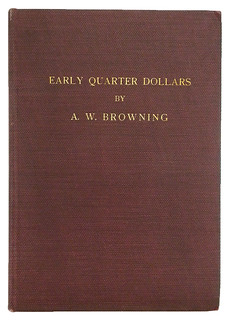 In the summer of 2000, I attended the ANA convention in Philadelphia. On August 9, I visited
the Fourth Philadelphia Mint, the Liberty Bell and Independence Hall. I could have spent the
following day on the bourse floor shopping for coins. Instead, I joined Carl Herkowitz, his wife
Barbara, and Scott Rubin on an adventure. We drove up a narrow winding road to the
unincorporated village of Palm, Pennsylvania, looking for the burial place for Ard Browning.
In the summer of 2000, I attended the ANA convention in Philadelphia. On August 9, I visited
the Fourth Philadelphia Mint, the Liberty Bell and Independence Hall. I could have spent the
following day on the bourse floor shopping for coins. Instead, I joined Carl Herkowitz, his wife
Barbara, and Scott Rubin on an adventure. We drove up a narrow winding road to the
unincorporated village of Palm, Pennsylvania, looking for the burial place for Ard Browning.
I had commented in 1993 about my inability to do a biography of Browning. Very little was
known of him before Herkowitz contributed an article to the July 1997 issue of The Asylum,
Ard W. Browning Through a 1920 Looking Glass.
Herkowitz was a colorful writer who could
create a five-page article out of one census listing.
RON GILLIO INTERVIEW, PART FOUR
Greg Bennick's latest interview for the Newman Numismatic Portal is with longtime dealer Ron Gillio. Here's the fourth of five parts, where Ron discusses fellow dealers Abe Kosoff and Sol Kaplan. -Editor
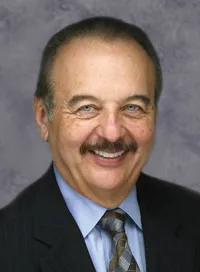 RON GILLIO: Well, Abe Kosoff is a big standout in my memory because when I
first started, he was in Encino, California. And then he moved to Palm Springs. And
I used to go and visit him and do business with him and buy coins from him. Not so
much in the 70s. I really didn't start buying coins from him until the 1980s. But
through the 80s and 90s, I did business with him. And he was a sharp dresser. He
was very diplomatic, always just perfectly dressed. And he was very fair. He always
treated me very well as most of those dealers during that time did. But he was close,
so I could readily, you know, go see him and buy a few coins. And then he started
giving me coins at consignment to sell for him, which was good. So, I did that.
And I'll never forget the time that he called me one time. This is, I believe, could
have been the 80s or maybe early 90s. He called me and said he's got something he
wants to sell me. He wanted me to come to Palm Springs. And what it was, he was
very friendly and partners with Sol Kaplan, who was another dealer at that time. And
Sol had passed away. And he said,
RON GILLIO: Well, Abe Kosoff is a big standout in my memory because when I
first started, he was in Encino, California. And then he moved to Palm Springs. And
I used to go and visit him and do business with him and buy coins from him. Not so
much in the 70s. I really didn't start buying coins from him until the 1980s. But
through the 80s and 90s, I did business with him. And he was a sharp dresser. He
was very diplomatic, always just perfectly dressed. And he was very fair. He always
treated me very well as most of those dealers during that time did. But he was close,
so I could readily, you know, go see him and buy a few coins. And then he started
giving me coins at consignment to sell for him, which was good. So, I did that.
And I'll never forget the time that he called me one time. This is, I believe, could
have been the 80s or maybe early 90s. He called me and said he's got something he
wants to sell me. He wanted me to come to Palm Springs. And what it was, he was
very friendly and partners with Sol Kaplan, who was another dealer at that time. And
Sol had passed away. And he said, I'm handing Sol's estate. And I got the balance
left.
He says, I want to sell it to you.
And I'll never forget it because it was safety
deposit box and safety deposit boxes full of coins and paper money. And so, I asked
him, What do you want for it?
He said, You figure out a price.
So, I figured out
a price. I'll never forget the price because I ended up buying it for $126,000. Well, I
didn't have $126,000 at the time. I mean, I had money, but it was all tied up. So, I
said, I can buy it from you, Abe. I can give you $10,000 and pay you the rest later.
He says, Fine. He says, pay me when you can.
I'll never forget that.
I had, excuse me, I had that same relationship with several dealers that Bob Johnson,
Sam Coppell in Los Angeles. These are people that were icons in the industry at the
time. And they always treated me very fairly. Always willing to loan me money or
sell me coins, pay me later. And of course, I always paid them. So, they kept selling
to me. But no, Abe was a fantastic gentleman.
KRAUSE LEGACY PARK DEDICATION (PEARL)
Sandy Pearl submitted this report on the Krause Legacy Park Dedication. Thank you! -Editor
I attended the Chester L Krause Legacy Park dedication on October 13, 2023. The date was selected as it was the published date of the initial issue of Numismatic News - October 13, 1952. The park was dedicated by the Village of Iola Wisconsin, headquarters of Krause Publications, in memory of Mr. Krause's (see photo below) service to his community and to mankind.
KRAUSE LEGACY PARK DEDICATION (REICHENBERGER)
Jeff Reichenberger also submitted a report on the dedication. Thanks! -Editor
The dedication ceremony of the Chester L. Krause Legacy Park took place on October 13 in Iola. It was intended to be held on the park grounds but Mother Nature had other ideas, as an all-day cold rain slanted down unmitigated. Fortunately, a plan B was in place and the ceremony was moved indoors to one of the Iola Historical Society's out buildings. Though the facility was spacious, every square foot seemed occupied by those touched by Chet's generosity. Members of the Numismatic community, Old Car Show enthusiasts, Chet's chosen charity organizations, and of course the Village of Iola, which were all so greatly impacted by his philanthropy.
ATLAS NUMISMATICS SELECTIONS: OCTOBER 29, 2023
Atlas Numismatics has updated their website with 409 new coins, medals, and tokens at fixed prices. Selections include the following items: -Editor
WBNA JAMAICAN BANKNOTE HIGHLIGHTS
Here are a number of highlights from the World Banknote Auctions sale of the Isabella Chang Fong & Ian Marshall Collection of Jamaican Banknotes. "IM Commentary" are notes from consignor Ian Marshall. Bibliophiles take note - a print version of the catalog, sure to be an important reference, is available. -Editor
World Banknote Auctions has now launched Isabella Chang Fong & Ian Marshall Collection of Jamaican Banknotes at www.worldbanknoteauctions.com. The most advanced collection of Jamaican paper money ever offered at public auction, this sale takes place on Thursday, November 3rd, at 1 PM EDT / 10 AM PDT. Our bidding platform can be accessed directly by going to bid.worldbanknoteauctions.com or through our mobile apps. This sale will be broadcast live on our website, with live bidding, accessible anywhere in the world. Bids can also be placed prior to the auction.
Please note that since a printed catalog was prepared a 20% buyer's premium applies to this sale.
KUENKER AUCTIONS 395-397, PART 3
Künker will hold five auction sales in November. Here's the second part of the press release detailing highlights of sales 395-397. -Editor
Orders and Decorations from Important Private Collections
Künker will kick off its Winter auction week with a spectacular sale of spectacular objects. On 13 November, auction 395 offers orders and decorations from several important special collections in addition to some outstanding individual pieces.
The auction will begin with a major collection of Prussian orders and decorations from the Rhineland. It contains a total of 287 lots, including numerous particularly rare objects, some of which have not been seen on the market for decades. The focal point is on the Prussian Order of the Red Eagle prior to 1918. With the help of the expertise of the doyen of Prussian phaleristics, Dr. Peter Sauerwald (1936-2022), the collector built up a systematic collection of these decorations and also gathered documents that testify to their bestowal of a kind that can hardly be found on the market.
TOM'S NUMISMATIC DIARY: OCTOBER 29, 2023
Last Tuesday, October 17th, I attended the monthly meeting of my Northern Virginia Numismatic Social group, Nummis Nova. Member Tom Kays kindly provided this nicely illustrated account of the evening. Thank you! I didn't manage to get it into last week's issue, but here goes. Some great numismatic material went around the table. -Editor
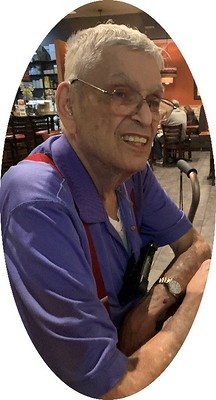 Nummis Nova assembles anew at Kob Kum Thai Cuisine Restaurant in Oakton, Virginia. Here are Eric, Jon, Jonas (guest), Lorne, Steve, Daryl (our host), Wayne, Kellen (guest), Roger, and Mike. Seating designed for efficient discussion proved so cozy that just out of picture are Tom (behind the camera) and Julian hanging onto the edge of the extra table we discovered and appropriated from storage at the back of the restaurant.
Nummis Nova assembles anew at Kob Kum Thai Cuisine Restaurant in Oakton, Virginia. Here are Eric, Jon, Jonas (guest), Lorne, Steve, Daryl (our host), Wayne, Kellen (guest), Roger, and Mike. Seating designed for efficient discussion proved so cozy that just out of picture are Tom (behind the camera) and Julian hanging onto the edge of the extra table we discovered and appropriated from storage at the back of the restaurant.
The public has got to wonder what this unusual bunch is up to as they pass around strange talismans in hushed tones and speak in numismatic tongues. Arcane and obscure incantations like Trihemitetratemorion
were spoken, while looking at tiny squares of cardboard with nearly invisible silver dots in the center, hailing from the very dawn of coinage itself. Large brass disks with fantastic designs resembling cave entrances in rock, and small bamboo talismans inscribed with oriental characters in plain, vanilla envelopes passed hand-to-hand, as tales of cultural significance invoked by their bringers, were debated by these hungry numismatic oracles, already feasting upon Thai-spicy oriental appetizers. Other diners must have felt the powerful magic of this coven and wisely kept distant from us.
THURSDAY LUNCH CLUB REPORT OCTOBER, 2023
Regarding the New Jersey "Thursday Lunch Club" group of colonial numismatics mavens, Ray Williams writes:
"On Thursday October 12th we met for lunch but three of us couldn't attend. It's a shame when health, jobs and jury duty make demands on our hobby time! But it gives the rest of us an opportunity to trash talk them in their absence! Only kidding! Those able to attend were Mike Brooks, Bill Liatys, Leo Shane, Roger Moore and myself, of course. I'm attaching some images of items brought for show n tell."
HERA ON ANCIENT COINS
Mike Markowitz published a new article on CoinWeek about Hera, Queen of the Gods. Here's an excerpt - see the complete article online. -Editor
HERA WAS REVERED as a protector by many Greek cities, and subsequently they tried to represent her surpassing beauty on their coins. While not as common on coins as the goddess of love Aphrodite, the nature goddess Artemis, or the war goddess Athena, Hera appears on dozens of different coin types. Her signature attributes are the polos, a decorated pillbox hat, or the stephanos[2], a sort of crown or tiara. She is sometimes depicted veiled
, with a fold of her garment draped over her head. Hera's companion animals were the cow, the cuckoo, and (especially) the peacock.
ANCIENT GREEK COINAGE GOLD PURIFICATION STUDY
A new study looks at ancient techniques of gold purification. -Editor
In a recent study, researchers used ICP-MS to learn new insights into ancient coinage and gold purification techniques are revealed through the analysis of platinum-group elements and gold in silver coins from various ancient civilizations.
Attica and Cyclades coins from ancient Greece are famous for their historical and cultural significance. These coins are unique because of their low gold content, and a team of researchers is using inductively coupled plasma–mass spectrometry (ICP-MS) to analyze them. The team looked at platinum-group elements (PGEs) and gold in 72 silver coins from various ancient civilizations, including Greece, Rome, India, medieval Europe, and colonial Spanish Americas.
BRISTOL OLD VIC THEATRE TOKEN
The Bristol Old Vic is the oldest continuously operating theatre in the English speaking world. Silver admission ticket tokens issued in 1766 are still valid, and one of the rare pieces is coming up for auction. Thanks to Dick Hanscom for passing the story along. -Editor
The Bristol Old Vic has vowed to honour a centuries-old policy and provide free tickets for every show to the new owner of a silver token dated to 1766 that is being sold at auction.
Only 50 tokens were minted for the original shareholders at the theatre and entitled the owner to watch every performance.
PHYSICAL BITCOINS IN SBG NOVEMBER 2023 SALE
Stack's Bowers Galleries will offer a number of physical bitcoins and related products in the upcoming November sales. Here's the press release. -Editor
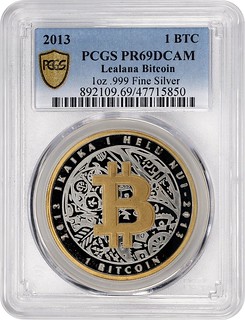 Stack's Bowers Galleries is excited to present two impressive sessions of Physical Bitcoin and
Cryptocurrency in their November 2023 Showcase Auction, the Official Auction of the Whitman Coin &
Collectibles Expo. This exciting offering marks the two-year anniversary of the firm's first auction of Physical
Cryptocurrency in November 2021. Since then, they have sold over 800 cryptocurrency coins totaling over $4
million in prices realized and set numerous records for the premiums achieved. Clearly collectors have embraced
physical crypto coins as legitimate numismatic collectibles, and Stack's Bowers Galleries has established itself as
the leading resource in this new category.
Stack's Bowers Galleries is excited to present two impressive sessions of Physical Bitcoin and
Cryptocurrency in their November 2023 Showcase Auction, the Official Auction of the Whitman Coin &
Collectibles Expo. This exciting offering marks the two-year anniversary of the firm's first auction of Physical
Cryptocurrency in November 2021. Since then, they have sold over 800 cryptocurrency coins totaling over $4
million in prices realized and set numerous records for the premiums achieved. Clearly collectors have embraced
physical crypto coins as legitimate numismatic collectibles, and Stack's Bowers Galleries has established itself as
the leading resource in this new category.
Stack's Bowers Galleries has curated two distinct cryptocurrency sessions for their November sale, each showcasing a formidable array of rare and exceptional quality pieces. The live bidding for Part 1 (Session 7) will begin on the morning of Friday, November 17 at 10AM PT. Part 2 (Internet-Only Session 10) will be sold the following week on Monday, November 20 at 10AM PT. Both sessions are currently posted for pre-bidding on the firm's website www.StacksBowers.com.
ON THE CLOSURE OF THE POBJOY MINT
Michael Alexander published an Coin Update article with insightful thoughts on the closure of the Pobjoy Mint. Here's an excerpt - see the complete article online. -Editor
Almost two weeks ago, you likely heard the surprising news of the retirement of the Pobjoy Mint's current director, Taya Pobjoy, and subsequently the closure of the Pobjoy Mint. Anyone who has been an active collector of modern coins during the last half century would probably have at least one or more coins produced from their privately owned facility in Surrey, England; it's virtually impossible not to. With Taya Pobjoy's announcement that she wanted to retire after having been at the helm for over thirty years, few could find fault with the reason. Taya, a wife and mother of two daughters, referenced wanting to spend time with her family and that it was essentially time
to go. However, many couldn't help but harbour the thought in the back of their minds: Why didn't the company simply name a new CEO to head this leading brand in terms of privately owned world mints?
If there wasn't a member of the Pobjoy family who could fulfil the task, then surely someone with a reasonable business and numismatic background could have been considered. The closure and retirement of this widely recognised brand certainly seems both arbitrary and too final, and the possibility of re-establishing the business in the future does seem unlikely.
1880 $100 SILVER CERTIFICATE
Stack's Bowers Currency Auction Associate Bradley C. Trotter published an article this week about a nice and very rare U.S. note. It's a classic and I've never seen one in person. -Editor
Among the deluge of notes that we encounter on a regular basis at Stack's Bowers Galleries, none is perhaps as prevalent as the Silver Certificate. Issued from 1878 to 1964, Silver Certificates were once widely encountered in circulation and are readily encountered today, either at shows or across the counter. The ubiquitous small-size Silver Certificates and the ever-popular Black Eagle
and Chief
pieces account for a large portion of the notes we handle.
However, as with any type of note, there are exceptions, and this note is the exception. It is an 1880 $100 Silver Certificate Fr. 341 (Rosecrans/Huston) that has been graded Very Fine 30 by PMG and is featured in our upcoming November U.S. Currency Showcase Auction as lot 20178.
THE BOOK BAZARRE
MOROCCO 100 FRANC PROOFS
Editor Fred Schwan published an article in his MPC Gram newsletter about a set of great banknotes he acquired from dealer Art Morowitz. With permission, we're republishing it here. -Editor
Arthur Morowitz died a few weeks ago (1943-2023). Arthur started out in the entertainment business where he was well knon nationally. He was best known these days as the owner of Champion Stamp Company. Among many other things tanley was proud of the fact that Champion is the last stamp company in New York City to have a street level shop.
Arthur was a friend of the greater MPC community. I did not obtain a lot of notes from Arthur, but the two that I recall were special! Arthur knew that I collect everything related to the E A Wright Bank Note Company and like any good dealer, he watched for items for me.
GHOST LEAVES COINS AROUND HOUSE
For Halloween season the Wall Street Journal published an article about the sale of haunted houses. One ghost has a numismatic flair. -Editor
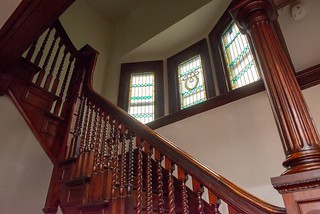 When Julia Park Tracey, 60, and her husband, Patrick Tracey, 63, bought a five-bedroom home in Grass Valley, Calif., in 2020 for $280,000 from Pennie Hughes, who was about 70 years old, she didn't disclose on any paperwork that the house was haunted. But Julia says she told them it was haunted informally and jokingly, saying things like,
When Julia Park Tracey, 60, and her husband, Patrick Tracey, 63, bought a five-bedroom home in Grass Valley, Calif., in 2020 for $280,000 from Pennie Hughes, who was about 70 years old, she didn't disclose on any paperwork that the house was haunted. But Julia says she told them it was haunted informally and jokingly, saying things like, Of course it's haunted; it's an old house.
Then, Hughes died on the day she was moving out of the home.
As soon as Julia, a novelist, and Patrick, a human resources consultant, moved in, she says coins started showing up. We found pennies everywhere in the most random places,
she says. Shiny pennies turned up for several years where she had already scoured. It was like she came back every night and seeded the ground with pennies,
she says. It was weird. She didn't want to leave…and by God, she didn't.
LOOSE CHANGE: OCTOBER 29, 2023
Here are some additional items in the media this week that may be of interest. -Editor
This PCGS piece by Mark Harvey is headlined "Frankensteinian Mistakes: Some of the Weirdest Error Coins You've Ever Seen." Here's an excerpt - see the complete article online. -Editor
Having been a part of the PCGS Marketing and Content teams for about five years now, I've encountered, and shared, a lot of error coins that make people openly wonder, How does that even happen?
Some of the more puzzling pieces are included below.
Ask anyone to draw Frankenstein's monster and there are likely to be a few elements that nearly each person will include, mostly based off of Boris Karloff's 1930s portrayals. One of those must have ingredients are The Creature's neck bolts. Yes, the pictured cent was struck on a screw, and not a bolt, but it's no doubt an oddity that caused quite a stir when it was first posted on PCGS' social media in 2019 spawning hundreds of comments and shares.
To read the complete article, see:
Frankensteinian Mistakes: Some of the Weirdest Error Coins You've Ever Seen
(https://www.pcgs.com/news/frankensteinian-mistakes-some-of-the-weirdest-error-coins-youve-ever-seen)
Other topics this week include D. B. Cooper's loot, and yet another revenge coin payment stunt. -Editor
COLORADO COIN CAPER
Daryl Haynor passed along this story from Colorado about (yet another) revenge coin payment stunt. Thanks. Does everyone who tries this think it's their very own original idea? -Editor
A Colorado judge chided a welding company that tried to pay off a $23,500 settlement with a subcontractor by sending the money in loose coins that weighed 3 tons (2.7 metric tonnes).
Judge Joseph Findley ruled Monday that JMF Enterprises acted maliciously and in bad faith
by delivering a custom made metal box containing the coins that was too heavy to be carried in the freight elevator at the offices for Fired Up Fabrications' lawyers, let alone with the forklift required to carry it, according to court filings.


